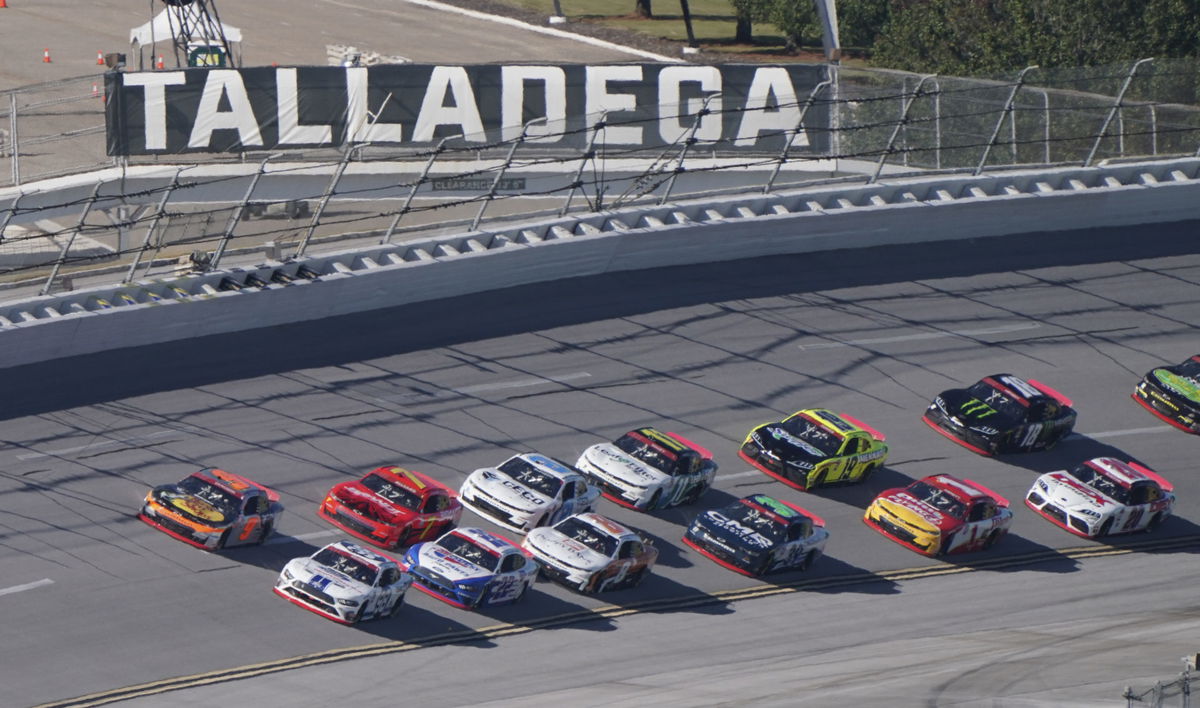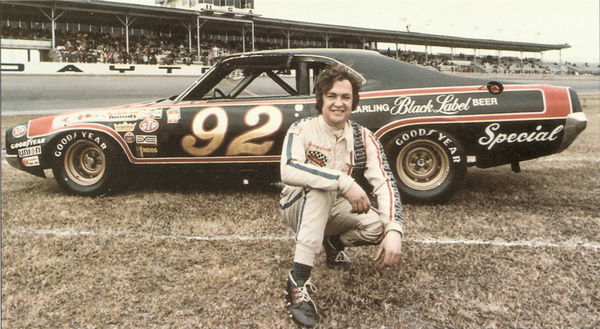
USA Today via Reuters
Oct 3, 2020; Lincoln, Alabama, USA; NASCAR Xfinity Series driver Chase Briscoe (98) leads NASCAR Xfinity Series driver Noah Gragson (9) at Talladega Superspeedway. Mandatory Credit: Marvin Gentry-USA TODAY Sports

USA Today via Reuters
Oct 3, 2020; Lincoln, Alabama, USA; NASCAR Xfinity Series driver Chase Briscoe (98) leads NASCAR Xfinity Series driver Noah Gragson (9) at Talladega Superspeedway. Mandatory Credit: Marvin Gentry-USA TODAY Sports
This season, the most significant ‘Big One’ unfolded at Talladega Superspeedway. Over 25 cars were caught in a smoking wreck when Brad Keselowski’s drafting maneuver failed during NASCAR’s Fall race. The crash echoed the many spine-chilling incidents this racetrack has witnessed over the years. The 2.66-mile behemoth, located in Lincoln, Alabama, has been the site of numerous tragedies, including one that remains a bizarre mystery to this day.
Watch What’s Trending Now!
Larry Smith began his motorsports career in drag racing and debuted in the NASCAR Cup Series in May 1971. Little did he know then that great upheavals were coming his way, both positive and negative. He also did not know that the next two years would be his last.
ADVERTISEMENT
NASCAR faced the Talladega curse
Legend says that the Talladega Superspeedway was built atop sacred land taken from the Creek Nation in the 1830s. A medicine man apparently cursed the place as his people were forced to migrate. Then in 1969, over a dozen stars led by Richard Petty refused to run the first race, lacking faith in Goodyear and Firestone tires at 200 mph. But NASCAR founder Bill France went ahead anyway. These ominous signs forecasted the bizarre incidents that were to come, one of which involved Larry Smith. In 1972, he competed in 23 of 31 races and earned seven top-10 finishes. This remarkable performance landed him the first Rookie of the Year honors in NASCAR’s modern era.
However, Smith then entered 1973, a year which may be a blot in NASCAR’s history books. The Winston 500 in May that year waited for an accident to happen as officials registered 60 cars at Talladega. Just 9 laps into the race, Wendell Scott spun out due to leaking oil. Suffering a broken leg, arm, and ribs, Scott received aid from drivers including Larry Smith. Despite this shocking incident, the following race was to be far more sinister. Three months later, Smith was scheduled to run the Talladega 500 and said he “had a score to settle with Talladega” for ruining his chances in the previous race.
ADVERTISEMENT

ADVERTISEMENT
But challenging the cursed land turned awry for the fresh rookie. His new girlfriend, Lillian Vandiver, reportedly foresaw the impending disaster. She said that before the race, “I saw Larry for a few minutes. He said, “I’ll see you after the race.” I knew then I’ll never see him alive again.” Early in the race, Smith cut a tire and ran a lap or two on the inner liner. But on lap 14, the liner blew, sending him into the first-turn retaining wall at 180 miles per hour. After a track worker reached the scene, he radioed back, “It’s bad, real bad.” Smith was taken to the in-field hospital and pronounced dead upon arrival. He was 31.
Yet before his death, Larry Smith had laid down a legacy for NASCAR.
ADVERTISEMENT
Opening a new revenue gateway
The tradition of NASCAR drivers painting their sponsors’ labels on race cars is over 50 decades old. And Larry Smith was one of the pioneers of this trend. Although he started out as an independent racer, his big break came during the 1972 Southern 500. The Canadian-owned Carling Black Label beer company was trying to expand its US footprint. And Smith provided that avenue – Carling sponsored the driver for that year and the next. Smith appeared in widely aired TV commercials and also covered his race car with Carling’s advertisements.
Larry Smith himself was surprised that a beer company was willing to cover his racing costs. Given his newbie stature, he was surprised bigger racers like Richard Petty evaded the brand’s interest. He told journalist Steve Wade, “At first, I was a bit puzzled as to why they would pick me, even though I was very happy about it all. They said that they were new to racing like I was and they wanted a driver they could go grow with.” True, Smith only raced in tracks mile-and-a-half or more in length, and his team was not strong enough to win. But by 1974 or ’75, that team could grow bigger, and then he could clinch victories. Smith himself said, “I’d quit racing right now if I didn’t think I could win in another one or two more years.”
Unfortunately, that wish stayed unfulfilled as Talladega claimed him. The mysterious speedway has no dearth of bizarre stories, that continue to flood NASCAR even today.
ADVERTISEMENT
ADVERTISEMENT
ADVERTISEMENT
ADVERTISEMENT

